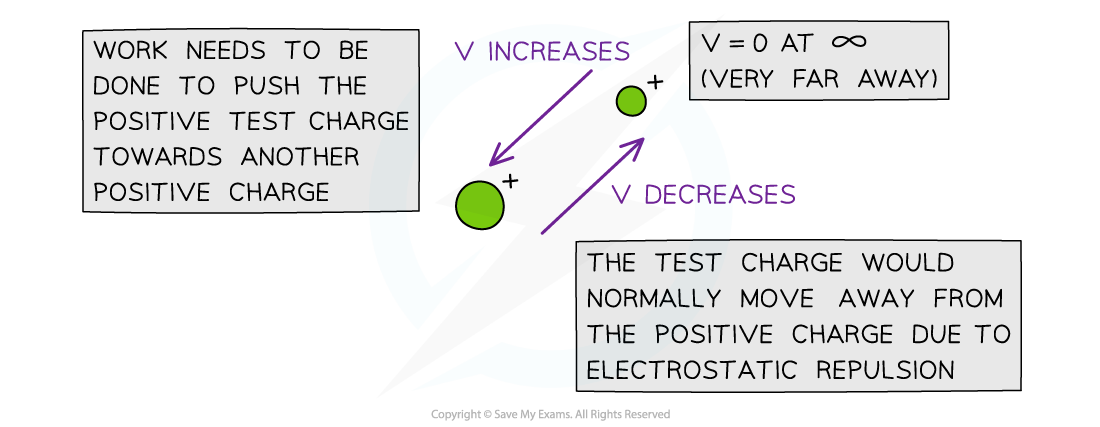Electric Potential (OCR A Level Physics): Revision Note
Exam code: H556
Electric Potential
In order to move a positive charge closer to another positive charge, work must be done to overcome the force of repulsion between them
Similarly, to move a positive charge away from a negative charge, work must be done to overcome the force of attraction between them
Energy is therefore transferred to the charge that is being pushed upon
This means its potential energy increases
If the positive charge is free to move, it will start to move away from the repelling charge
As a result, its potential energy decreases back to 0
This is analogous to the gravitational potential energy of a mass increasing as it is being lifted upwards and decreasing as it falls
The electric potential at a point is defined as:
The work done per unit positive charge in bringing a point test charge from infinity to a defined point
Electric potential is a scalar quantity
This means it doesn’t have a direction
Even though electric potential is a scalar quantity, it can take a positive or negative sign, this is because the electric potential is:
Positive around an isolated positive charge
Negative around an isolated negative charge
Zero at infinity
Positive work is done by the mass from infinity to a point around a positive charge and negative work is done around a negative charge. This means:
When a positive test charge moves closer to a negative charge, its electric potential decreases
When a positive test charge moves closer to a positive charge, its electric potential increases
To find the potential at a point caused by multiple charges, the total potential is the sum of the potential from each charge


The electric potential V decreases in the direction the test charge would naturally move in due to repulsion or attraction

Unlock more, it's free!
Did this page help you?